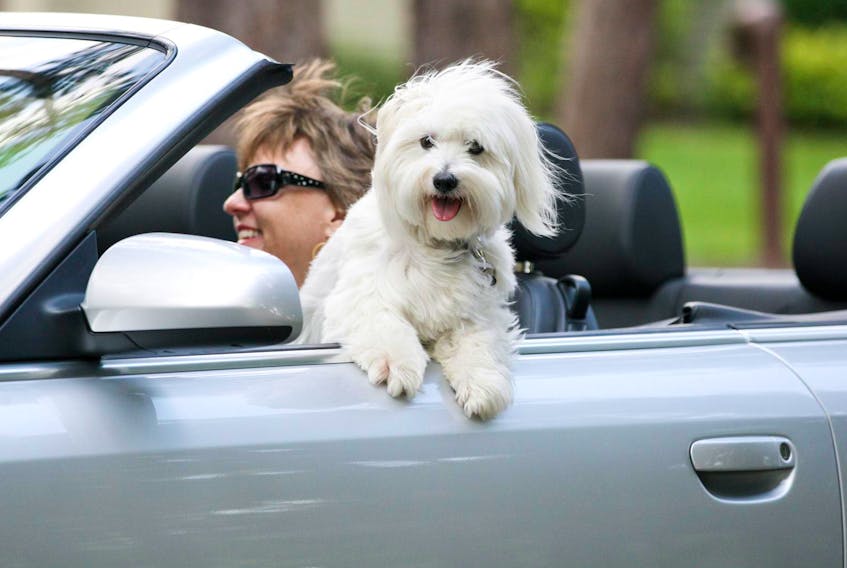You see it all the time. Drivers holding their precious pooch in their lap while they go down the road.
These folks are obviously ignorant of the danger, the tremendous forces involved in an airbag deployment.
Airbags are designed to fill the space between the occupant and the surface they face.
In the case of the driver, the bag has to deploy so quickly and with such force, that it is fully inflated before the driver’s body is thrown into the steering.
Nowhere in their studies and engineering was there provision for something to be between the steering wheel and the driver.
Anything in that space will be struck with awesome force, crushed instantly, whether it be a cell phone or Fido. We are talking milliseconds and tons of pressure here!
These drivers may think they are just going down the street or around town. They will be going slowly. They are just out for a little drive. The problem is that the majority of airbag deployments happen in exactly those conditions, in urban areas at speed less than 70 km/h.
The driver, if they think about it at all, might think that the seatbelt will protect them and there is plenty of room for the pet. Wrong.
The belts are designed to stretch, to gradually (in relative terms) absorb some of the energy involved in the crash before the airbag comes into play. The belts and bags are engineered to work in harmony.
The driver might think they could hold unto their little furry friend in a crash. Wrong again. Pardon me while I use a little lesson in physics to make a point.
When an object comes to an abrupt stop (say a vehicle), anything in or connected to it continues at speed until it too strikes something solid.
That includes pets, stuff on the seat, that bag of groceries on the back seat, and anything on the rear parcel shelf or in the trunk.
Force (F) is equal to Mass (M) times Acceleration (A). This is a known fact that cannot be ignored or modified.
In a crash from a speed as low as 50 km/h, any object in the vehicle will be subjected to approximately 20 to 25 times the force of gravity (i.e. 20-25 Gs) when they come to that sudden stop. If Fido is a little lap dog, tipping the scales at a mere 10 lbs., he or she would instantly weigh 200-250 lbs., or about 100 kilos. If either weight or speed is greater, the forces grow exponentially.
Think you could hold unto that little pooch?
Now add in the airbag, designed to fire off at vehicle speeds as low as 15 km/h.
The speed of that airbag deployment varies from 100-300 km/h depending on the vehicle speed, forces of the crash and the size and position of the occupant.
It does not allow for Fido!
It is said that people and their pets are often inseparable.
That is especially true in a crash where the driver was holding a pet on his or her lap or in their arms.
Pets, like other occupants, should be properly restrained in a carrying crate or harness designed for them.
That way they will be around to provide some much-needed comfort after the crash.









